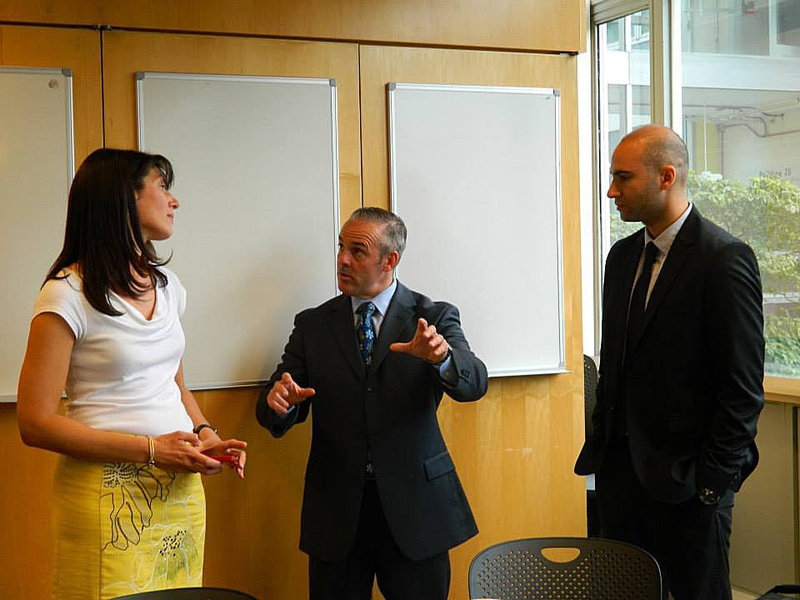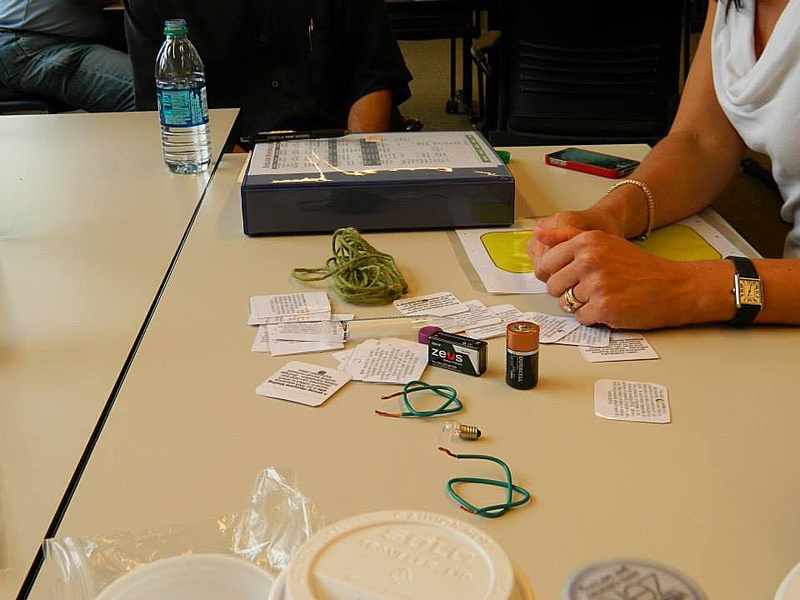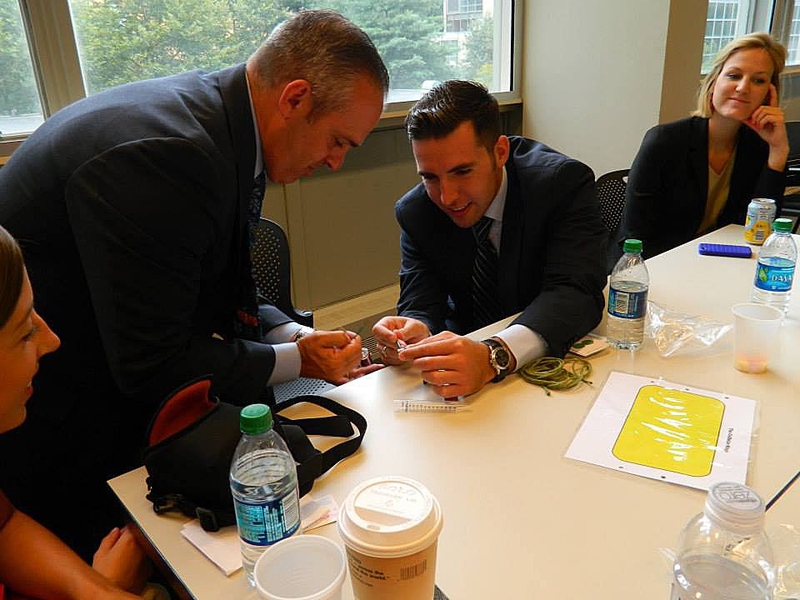Matthew Malone, Massachusetts secretary of education, visited MIT on August 13 to speak with high-school science teachers and others on campus as part of the BioBuilder Educational Foundation’s professional development workshop.
BioBuilder offers educational resources for middle-school, high-school and college students and educators to explore biological engineering and synthetic biology. Founded by Natalie Kuldell, instructor in the Department of Biological Engineering, BioBuilder emphasizes hands-on activities and inquiry-driven lab work. Through its summer workshop series, BioBuilder presents classroom, lab and design activities that teachers can bring to their science classrooms.
Malone supported BioBuilder when, prior to being appointed secretary of education in January, he served as superintendent for the Brockton Public School system in Brockton, Mass. BioBuilder launched a partnership with Brockton High School in 2012 through funding support from the Massachusetts Life Sciences Center. As a result of this partnership, BioBuilder provided the school with lab equipment, supplies and teacher training.
Malone said that the opportunities for “tech tinkering” provided by BioBuilder and other like-minded programs are an important component of science education.
“When we think about what this program does ... it’s about hands-on, practical learning, about how we engage young people in inquiry, and about being able to either make something, test something, or force something to happen, and then analyze it and come up with conclusions,” Malone said.
At MIT, Malone spoke briefly to the educators in attendance about the importance of engaging in professional development opportunities, integrating science across the curriculum and developing strategic partnerships with local organizations and universities. He then fielded questions from the teachers on a variety of topics, including changes to state standardized testing and potential state adoption of Next Generation Science Standards.
Before leaving, he joined a hands-on BioBuilder design activity where teachers created genetic circuit models using yarn — representing “wires” of DNA — and plastic cards — representing genetic operators, promoters and repressors — to demonstrate that these basic components can be used as a programming language for living cells. The activity also demonstrated — through batteries, copper wire and light bulbs — that genetic circuits are very similar to electric circuits.
Natalie Kuldell founded BioBuilder to inspire students to learn biology by building it themselves through investigations and lab work. She also trains teachers to not only teach curriculum content but also think and study like scientists.
“We need to empower students and teachers to tackle big questions, to become real problem solvers who will change the world,” Kuldell says. “Through BioBuilder, we’ve brought current science and engineering into classrooms all over the country, and we’ve seen how this reinvigorates the students as they learn and their teachers as they teach.”
Hands-on problem solving is a powerful component of science education, and it also provides a confidence that can be applied both inside and outside of the classroom or lab.
“What develops more confidence in young people than doing something themselves?” said Malone. “Whether it’s successful or it fails ... it builds confidence, and that’s what perseverance is all about."
BioBuilder offers educational resources for middle-school, high-school and college students and educators to explore biological engineering and synthetic biology. Founded by Natalie Kuldell, instructor in the Department of Biological Engineering, BioBuilder emphasizes hands-on activities and inquiry-driven lab work. Through its summer workshop series, BioBuilder presents classroom, lab and design activities that teachers can bring to their science classrooms.
Malone supported BioBuilder when, prior to being appointed secretary of education in January, he served as superintendent for the Brockton Public School system in Brockton, Mass. BioBuilder launched a partnership with Brockton High School in 2012 through funding support from the Massachusetts Life Sciences Center. As a result of this partnership, BioBuilder provided the school with lab equipment, supplies and teacher training.
Malone said that the opportunities for “tech tinkering” provided by BioBuilder and other like-minded programs are an important component of science education.
“When we think about what this program does ... it’s about hands-on, practical learning, about how we engage young people in inquiry, and about being able to either make something, test something, or force something to happen, and then analyze it and come up with conclusions,” Malone said.
At MIT, Malone spoke briefly to the educators in attendance about the importance of engaging in professional development opportunities, integrating science across the curriculum and developing strategic partnerships with local organizations and universities. He then fielded questions from the teachers on a variety of topics, including changes to state standardized testing and potential state adoption of Next Generation Science Standards.
Before leaving, he joined a hands-on BioBuilder design activity where teachers created genetic circuit models using yarn — representing “wires” of DNA — and plastic cards — representing genetic operators, promoters and repressors — to demonstrate that these basic components can be used as a programming language for living cells. The activity also demonstrated — through batteries, copper wire and light bulbs — that genetic circuits are very similar to electric circuits.
Natalie Kuldell founded BioBuilder to inspire students to learn biology by building it themselves through investigations and lab work. She also trains teachers to not only teach curriculum content but also think and study like scientists.
“We need to empower students and teachers to tackle big questions, to become real problem solvers who will change the world,” Kuldell says. “Through BioBuilder, we’ve brought current science and engineering into classrooms all over the country, and we’ve seen how this reinvigorates the students as they learn and their teachers as they teach.”
Hands-on problem solving is a powerful component of science education, and it also provides a confidence that can be applied both inside and outside of the classroom or lab.
“What develops more confidence in young people than doing something themselves?” said Malone. “Whether it’s successful or it fails ... it builds confidence, and that’s what perseverance is all about."








